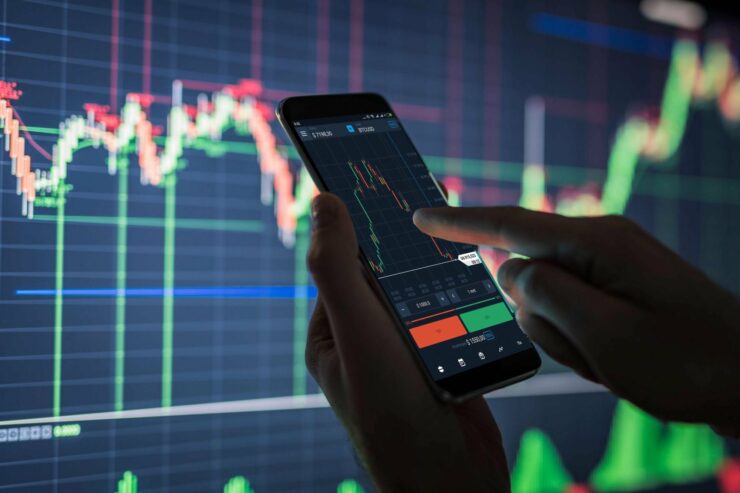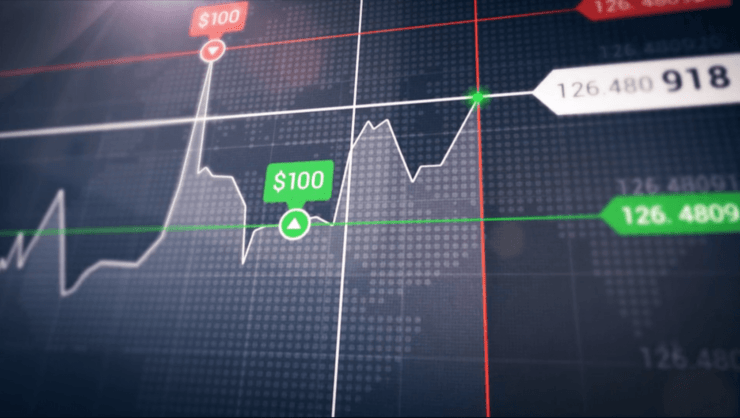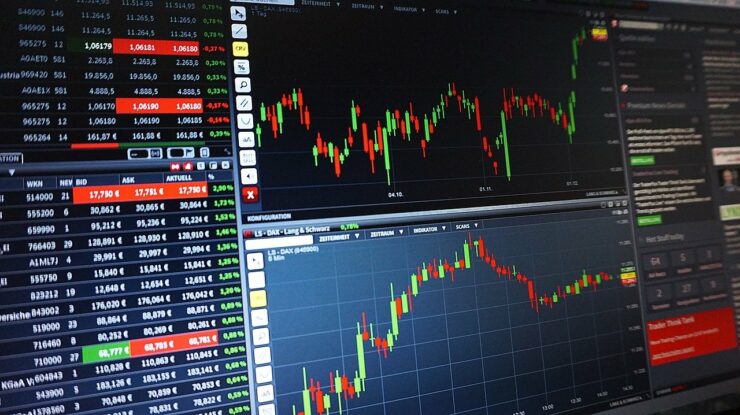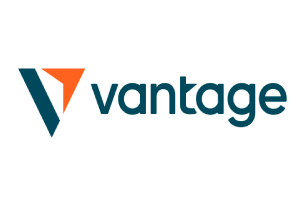Have an interest in the financial markets? If so, you might be looking to dabble with the online trading space. You’re not alone, as millions of retail traders around the world buy and sell assets at the click of a button – both on a part-time and full-time basis.
Our Forex Signals
1 - month
Subscription
 Up to 15 signals daily
Up to 15 signals daily 76% success rate
76% success rate Entry, take profit & stop loss
Entry, take profit & stop loss Amount to risk per trade
Amount to risk per trade Risk reward ratio
Risk reward ratiomonth
3 - month
Subscription
 Up to 15 signals daily
Up to 15 signals daily 76% success rate
76% success rate Entry, take profit & stop loss
Entry, take profit & stop loss Amount to risk per trade
Amount to risk per trade Risk reward ratio
Risk reward ratiomonth
 Most popular
Most popular
6 - month
Subscription
 Up to 15 signals daily
Up to 15 signals daily 76% success rate
76% success rate Entry, take profit & stop loss
Entry, take profit & stop loss Amount to risk per trade
Amount to risk per trade Risk reward ratio
Risk reward ratiomonth
Lifetime
Subscription
 Up to 15 signals daily
Up to 15 signals daily 76% success rate
76% success rate Entry, take profit & stop loss
Entry, take profit & stop loss Amount to risk per trade
Amount to risk per trade Risk reward ratio
Risk reward ratioSeparate Swing Trading Group
 Up to 3 signals weekly
Up to 3 signals weekly 76% success rate
76% success rate Entry, take profit & stop loss
Entry, take profit & stop loss Amount to risk per trade
Amount to risk per trade Risk reward ratio
Risk reward ratiomonth
1 - month
Subscription
 Up to 15 signals daily
Up to 15 signals daily 76% success rate
76% success rate Entry, take profit & stop loss
Entry, take profit & stop loss Amount to risk per trade
Amount to risk per trade Risk reward ratio
Risk reward ratiotime
With that said, online trading isn’t as simple as opening a broker account and making money. On the contrary, you need to have a firm grasp of how the industry works.
For example, are you looking to day trade currencies like GBP/USD and EUR/USD, or are you more interested in buying and selling blue-chip stocks? Either way, there’s much to learn!
3
Payment methods
Trading platforms
Regulated by
Support
Min.Deposit
Leverage max
Currency Pairs
Classification
Mobile App
Min.Deposit
$100
Spread min.
Variables pips
Leverage max
100
Currency Pairs
40
Trading platforms
Funding Methods





Regulated by
FCA
What you can trade
Forex
Indices
Actions
Cryptocurrencies
Raw Materials
Average spread
EUR/GBP
-
EUR/USD
-
EUR/JPY
0.3
EUR/CHF
0.2
GBP/USD
0.0
GBP/JPY
0.1
GBP/CHF
0.3
USD/JPY
-
USD/CHF
0.2
CHF/JPY
0.3
Additional Fee
Continuous rate
Variables
Conversión
Variables pips
Regulation
Yes
FCA
No
CYSEC
No
ASIC
No
CFTC
No
NFA
No
BAFIN
No
CMA
No
SCB
No
DFSA
No
CBFSAI
No
BVIFSC
No
FSCA
No
FSA
No
FFAJ
No
ADGM
No
FRSA
71% of retail investor accounts lose money when trading CFDs with this provider.
Min.Deposit
$100
Spread min.
- pips
Leverage max
400
Currency Pairs
50
Trading platforms
Funding Methods




Regulated by
CYSECASICCBFSAIBVIFSCFSCAFSAFFAJADGMFRSA
What you can trade
Forex
Indices
Actions
Cryptocurrencies
Raw Materials
Etfs
Average spread
EUR/GBP
1
EUR/USD
0.9
EUR/JPY
1
EUR/CHF
1
GBP/USD
1
GBP/JPY
1
GBP/CHF
1
USD/JPY
-
USD/CHF
1
CHF/JPY
1
Additional Fee
Continuous rate
-
Conversión
- pips
Regulation
No
FCA
Yes
CYSEC
Yes
ASIC
No
CFTC
No
NFA
No
BAFIN
No
CMA
No
SCB
No
DFSA
Yes
CBFSAI
Yes
BVIFSC
Yes
FSCA
Yes
FSA
Yes
FFAJ
Yes
ADGM
Yes
FRSA
71% of retail investor accounts lose money when trading CFDs with this provider.
Min.Deposit
$50
Spread min.
- pips
Leverage max
500
Currency Pairs
40
Trading platforms
Funding Methods




What you can trade
Forex
Indices
Actions
Raw Materials
Average spread
EUR/GBP
-
EUR/USD
-
EUR/JPY
-
EUR/CHF
-
GBP/USD
-
GBP/JPY
-
GBP/CHF
-
USD/JPY
-
USD/CHF
-
CHF/JPY
-
Additional Fee
Continuous rate
-
Conversión
- pips
Regulation
No
FCA
No
CYSEC
No
ASIC
No
CFTC
No
NFA
No
BAFIN
No
CMA
No
SCB
No
DFSA
No
CBFSAI
No
BVIFSC
No
FSCA
No
FSA
No
FFAJ
No
ADGM
No
FRSA
71% of retail investor accounts lose money when trading CFDs with this provider.
This is why we strongly suggest reading our Learn 2 Trade 2023 Guide on Online Trading. In doing so, you’ll give yourself the best chance possible of succeeding in the retail investment space.
Note: As we cover in our guide, it’s crucial that you understand how stop-loss orders work when trading online. This will ensure that you are able to mitigate your trading risks on a long-term basis.
Eightcap - Regulated Platform With Tight Spreads

- Minimum deposit of just 250 USD to get lifetime access to all the VIP channels
- Use our Secure and Encrypted Infrastructure
- Spreads from 0.0 pips on Raw Accounts
- Trade on the Award-Winning MT4 & MT5 Platforms
- Multi-jurisdictional Regulation
- No Commission Trading on Standard Accounts

What is Online Trading?
In a nutshell, online trading is the process of buying and selling assets with the view of making money. For example, if you bought £1,000 worth of BT stocks, and then sold them five days later at a profit of 10%, this would represent a successful trade. With that said, online trading isn’t reserved just for traditional stocks and shares. On the contrary, you can buy, sell, and trade thousands of financial instruments from the comfort of your home.
This includes everything from bonds, indices, commodities, ETFs, and even digital currencies like Bitcoin. Crucially, the overarching objective is that you are able to buy or sell an asset at a more favourable price than you originally paid. If you are able to do this, you’ll make a profit . To help you gauge which way the markets are likely to go, you’ll need to make use of technical indicators and/or fundamental news analysis. If you don’t, you may as flip a coin and hope for the best.

Unlike a traditional shares portfolio – where investors typically sit on stocks for a number of years, online trading is usually performed on a short-term basis. This covers day trading -which sees investors hold onto an asset for a number of hours, or even minutes. Then you have those that prefer swing trading, which typically sees investors keep a position open for a number of days or weeks.
Pros and Cons of Online Trading
- Trade assets from the comfort of your home
- Online brokers host thousands of financial instruments
- Ability to speculate on whether the asset will go up or down in value
- Deposit funds with a debit/credit card, e-wallet or bank account
- Online trading platforms must be regulated
- Fees and commissions are now super-low
- Most day traders lose money
- You need to be able to handle the emotional side effects of losing trades
Understanding Online Trading – The Basics
There is much to learn about the ins and outs of how online trading works, so it’s best that we guide you through the process step-by-step. This starts at the very offset, as you’ll need to choose an online trading platform that best meets your needs.
✔️Choosing an Online Trading Platform
Your first port of call will be to find a broker. After all, this is the only way that you will be able to buy and sell assets online. The most important metric that you should look out for is with regards to the platform’s regulatory standing. Crucially, if the broker doesn’t hold a tier-one license – avoid it.
The kind of licensing bodies that you need to look out for are the likes of the FCA (UK), ASIC (Australia), CySEC (Cyprus), and MAS (Singapore). In doing so, your investment funds will remain safe at all times.
Once you’ve established the broker’s regulatory standing, you then need to look at other metrics – such as those listed below.
- Eligibility: You need to check whether or not the broker accepts traders from your country of residence.
- Payments: Does the broker support your preferred payment method? Popular options include a debit/credit card, e-wallet, or bank transfer.
- Fees and Commissions: Check to see what fees and commissions the broker charges. This usually varies depending on the type of account you open.
- Spreads: Explore how competitive the online trading platform is in the spreads department. The tighter the spread, the better.
- Tradable Instruments: It’s super-important to assess what tradable instruments the broker hosts. The best online trading sites typically offer thousands of markets.
- Customer Support: Check to see what customer support channels are offered by the trading site. This should include live chat, email, and telephone support.
Don’t worry, we explore the above metrics in more detail further down in our guide.
✔️Deciding Which Assets to Trade
As we briefly noted above, the best online trading platforms will give you access to thousands of markets. Not only does this ensure that you can trade your favourite asset class, but it allows you to create a highly diversified portfolio of holdings.
To give you an idea of the many assets that you can trade online, check out the list below:
- Stocks: Online trading sites typically give you access to thousands of blue-chip stocks. At a minimum, this should include the main markets of the London Stock Exchange (LSE), New York Stock Exchange (NYSE), and NASDAQ.
- Stock Indices: If you’re looking to trade the wider stock markets, indices allow you to buy hundreds of shares through a single trade. This includes the S&P 500, Dow Jones, and FTSE 100.
- Commodities: The commodity trading space is a multi-trillion dollar industry of its own. This includes energies like oil and gas, hard metals like gold, and even agricultural products such as wheat and corn.
- ETFs: ETFs (exchange-traded funds) are in place to track an asset, or group of assets – and they allow you to trade a market without taking direct ownership. This includes everything from real estate, legal marijuana, airline stocks, and mutual funds.
- Forex: The foreign exchange space – or simply ‘forex’, is the process of buying and selling currencies. The idea is to speculate which way a specific currency pair will move in the market – such as GBP/USD or AUD/NZD.
- Cryptocurrencies: If you’ve got a slightly higher appetite for risk, online trading platforms now allow you to speculate on the future direction of popular cryptocurrencies like Bitcoin. You can either do this against the USD or trade crypto-to-crypto pairs directly (like BTC/ETH).
The above list is not exhaustive by any stretch of the imagination. For example, you can also trade bonds, interest rates, government securities, and virtually any asset that derives value!
✔️Understanding Trading Orders
When you engage with an online trading site, you will be required to have a firm grasp of how the order process works. This is because you will be trading on a DIY basis, meaning that you need to let the broker know what it is you are trying to achieve. After all, online forex brokers accepting traders from the UK will not, and cannot, give you advice on what trades to place. Instead, you need to figure this out for yourself.
As such, below we discuss some of the most important orders that you will be required to place when trading online.
Buy and Sell Orders
First and foremost, you need to determine which way you think the asset in question will move in the market. This is because unlike a traditional stockbroker, you will always have the option of going ‘long’ or ‘short’. For those unaware, going long on an asset means that you think its price will increase. If this is the case, you need to place a ‘buy order’.

Once you have determined whether you plan to long or short the asset, you then need to think about your entry price. In this sense, you have two options – a market order or limit order.
Market Order
Option one is a market order. This simply means that you want to place your buy or sell order at the next available price. For example, let’s say that you wish to go long on Tesco stocks.
If the current market price is 235.59p, a market order might execute your trade at 235.61p. Similarly, it could just as easily get placed at 235.57p. Either way, it is going to be in and around the current market price.
Limit Order
Limit orders give you the flexibility of choosing an entry price. This option is favoured by seasoned traders, as it allows you to enter the market at a more favourable price and thus – reduce the spread. For example, let’s say that you want to place a buy order on Tesco stocks, but you don’t want to pay the current market price of 235.59p.
Instead, you want to enter the market at a more favourable price – say 0.5% below the current price. As such, you place a limit order at 234.41p. If and when the market price of Tesco stocks hits that figure, your trade will be executed. Of course, there is no guarantee that your entry price will be met. If it isn’t, your limit order will remain active until you cancel it.
Stop-Loss Orders
As we briefly mentioned earlier, it is imperative that you understand how stop-loss orders work. In doing so, you’ll be able to avoid making huge losses when trading online. Instead, you can ‘limit’ the amount you lose by placing a sensible stop-loss order.
For example, let’s stick with the Tesco trade that we discussed in the section above. You decide to place a long market order, and your trade is executed at 253.60p. Although you are confident that the price of Tesco stocks will increase in the coming days and weeks, you don’t want to lose more than 10% of your stake.
So, based on your entry price of 253.60p, you would be required to install your stop-loss order at 228.24p. This means that were the price of Tesco stocks to decline down to 228.24p – your stop-loss order would automatically close the trade at a loss of 10%.
Guaranteed Stop-Loss Orders
Stop-loss orders are great for mitigating your risk, but they are not 100% guaranteed. By this, we mean that in super-volatile market conditions, your order might not get matched on the way down. If this is the case, your trade is at risk of making huge losses.
As such, it might be worth considering a ‘guaranteed’ stop-loss order. By paying a slightly higher fee on your trade, the broker will ensure that your stop-loss order is honoured.
Take Profit Orders
The final order that you need to understand as a newbie online trader is that of a take-profit order. This works in exactly the same way as the previously discussed stop-loss order but in reverse.
For example, while you have already placed your stop-loss order to mitigate your losses to 10%, you might want to exit your trade when Tesco stocks increase by 20%.
At an entry price of 235.60p, a 20% take-profit order would need to be placed at 282.72p. If the price is met, your trade will be closed automatically.
✔️Trading Fees
One of the most important metrics to look out for when choosing an online trading site is how much you will be charged. Pricing models can vary wildly in the online trading space, so be sure to review the sections below on spreads and trading commissions.
The Spread
In the vast majority of cases, your chosen online broker will charge a spread. This is essentially the difference between the buy and sell price of an asset. The spread puts you at an instant disadvantage when you trade, as you need to make up the difference just to break even. As such, the lower the spread, the more favourable it is for you as a trader.
Attempting to get your head around the spread can be confusing at first, so check out the following example.
- You want to trade oil.
- If you want to go long, the buy price is $24.00.
- If you want to go short, the selling price is $23.60.
- The difference between the two prices is 1.69%.
- This means that you need to make at least 1.69% on your trade to break even.
For example, let’s say that you placed a buy order on oil at $24.00. If you then wanted to exit your position, you would only be able to do so at $23.60 – as this is the current sell price.
Only when the sell price increases by 1.69% to $24.00 would you break even, as this is the price that you entered the market at.
Trading Commissions
Trading commissions are charged by brokers when you buy and sell an asset. This is usually calculated as a percentage, which is then multiplied by the size of your trade.
For example, let’s say that you buy £4,000 worth of British American Tobacco stocks. If the broker charges a commission of 1%, then you’ll pay £40.

The good news is that a number of brokers active in the online investment space allow you to trade on a commission-free basis. This means that you will only need to cover the spread.
✔️Trading With Leverage
The vast bulk of online trading platforms will allow you to buy and sell assets with leverage. This allows you to amplify the size of your trade. For example, let’s say that you apply the leverage of 5x on a £500 order. In doing so, the value of your trade is £2,500 – even though you only have £500 in your broker account.
On the one hand, applying leverage can amplify your profits when the markets go in your favour. They are also useful when you want to trade, but you don’t have a very substantial account balance. However, trading with leverage is also very risky, as you could lose your entire stake.
Getting Liquidated
If you do decide to trade with leverage, you will be required to put up a ‘margin’. This is like putting up security on a loan, insofar that if you default on your repayments, the lender will keep the deposit. In the case of leverage, the size of your margin dictates how much you can amplify your trade by. For example, if you apply the leverage of 20x, and your margin is £200 – you are trading with £4,000.
However, this also means that you will lose your £200 margin if the trade is liquidated by the broker. This will happen if the markets go against you by a certain amount. For example, as a £200 margin on £4,000 amounts to 5%, then a 5% swing in the wrong direction would see the broker close your trade automatically, and keep the margin.
The only way to avoid this is to:
- Install a stop-loss order well above/below the liquidation price, or
- Add more funds to your margin balance
✔️Performing Research
If you decide to trade online without performing research, you may as well be gambling at a casino. As such, it’s crucial that you learn how to analyze assets – both in the technical and fundamental departments.
Technical Analysis
Technical analysis refers to the process of reading charts. More specifically, you will be analyzing historical chart patterns, with the view of predicting which way the asset is likely to go. In truth, it can take many months before you begin to get comfortable with technical analysis, but it’s crucial nonetheless.
To help you along the way, you’ll want to utilize technical indicators. These are tools that strive to assess key trends of the asset – such as volatility, trading volumes, market sentiment, and support/resistance lines.
Popular technical indicators used by seasoned online traders include:
- Standard deviation.
- Stochastic oscillator.
- Moving average convergence divergence (MACD).
- Average directional index.
- Relative strength index (RSI).
- Fibonacci retracement.
- Ichimoku cloud.
- Standard deviation.
- Bollinger bands.
If you’re a newbie trader and you simply can’t get your head around chart analysis tools, it might be worth using the Learn 2 Trade signals service. We offer both a free and premium service that alerts you in real-time when a technical indicator has spotted an impending trading opportunity.
You can use this in conjunction with fundamental research, which we discuss below.
Fundamental Research
While technical analysis strives to evaluate historical pricing trends, fundamental research looks at real-world news. More specifically, the idea is to assess how a news development could impact the future price of an asset.
For example, let’s take the Coronavirus pandemic of 2020. With the vast bulk of planes grounded around the world – and consumers stuck in lock-down – demand for oil was practically non-existent.
And what happens when the demand for an asset goes down? Its price follows suit. As such, a shrewd investor will assess real-world news events throughout the day, and place a trade accordingly.
Types of Online Trading Strategies
So now that you know the basics of online trading, you now need to think about the type of trading strategies that you wish to employ. This can typically be split across three categories – which is dependent on how actively you plan to trade.
Day Trading
As the name suggests, day traders rarely hold onto an open position for more than a day. Instead, traders will buy or sell an asset and then offload it later in the day.
The position might stay open for a number of hours, or even minutes – depending on the trade-in question. Day traders typically place dozens of trades per day and strive to make ultra-small gains.
Swing Trading
Swing trading is slightly different from day trading, as it often sees investors keep a position open for a number of days of weeks. For example, a trader might place a buy order on Apple in response to its better-than-expected earnings reports.
The trader will look to enjoy a short-term upward trend, and then exit the trade when it appears that the trend is beginning to die out.
Long-Term Trading
Long-term trading will see investors hold onto the asset for a number of months or years. This typically suits passive investors that wish to enjoy consistent, long-term gains.
For example, you might decide to buy £5,000 worth of BP shares and then sell them four years later at a (hopefully) higher price. During this process, you will also enjoy passive income in the form of quarterly dividends.
How to Start Trading Online Today
If you’ve read our guide up to this point, you should now have a firm grasp of how online trading works. If so – and you’re ready to start trading right now -below we have outlined a simple step-by-step guide to help get you started.
Step 1: Find an Online Trading Site
You will first need to find an online trading site that meets your long-term investment goals. The broker in question should be heavily regulated and offer heaps of tradable instruments.
It should also offer tight-spreads and low commissions, and allow you to deposit and withdraw funds with ease.
If you don’t have time to find an online trading site yourself, you’ll find our five top-rated brokers listed at the bottom of this page.
Step 2: Open Account and Verify Identity
All online trading sites require you to open an account. As such, you’ll need to provide some personal information.
This includes your:
- Full Name.
- Home Address.
- Nationality.
- Date of Birth.
- National Tax Number.
- Contact Details.
You will also need to verify your identity. Most online trading sites allow you to do this by quickly uploading a copy of your passport or driver’s license.
Step 3: Deposit Funds
You will now need to fund your online trading account.
Commonly supported payment methods include:
You should also check what the minimum deposit amounts to, and whether your prefered payment method attracts any fees.
Step 4: Place an Order
Once your online trading account is funded, you can place your first trade. To get the ball rolling, browse through the many financial instruments that the broker supports.
If you’ve got a specific asset in mind, search for it. For example, if you want to trade Apple stocks, enter ‘Apple’ into the search box and click on the corresponding result.
Once you are on the respective trading page for your chosen asset, you’ll need to place an order.
- Buy/Sell: Choose from a buy (long) or sell (short) order
- Stake: Enter the amount that you wish to trade
- Market/Limit Order: Choose a market order if you want to take the next available price. Opt for a limit order if you want your trade entered at a specific price.
- Leverage: If you want to apply leverage, select your multiple
- Stop-Loss: Set up a stop-loss order to limit your potential losses
- Take Profit: Set up a take-profit order to lock in your potential profits
Once you confirm the order, it should be executed within a couple of seconds. If you opted for a limit order, this won’t happen until your entry price is triggered.
Best Online Trading Sites of 2023 – Our Top 5 Picks
Looking for some guidance on which online trading site to use? If so, you’ll find our top five picks of 2023 listed below. All of our recommendations are regulated, offer low spreads and commissions, and allow you to easily deposit funds with a debit/credit card.
1. AVATrade – 2 x $200 Forex Welcome Bonuses
The team at AVATrade are now offering a huge 20% forex bonus of up to $10,000. This means that you will need to deposit $50,000 to get the maximum bonus allocation. Take note, you'll need to deposit a minimum of $100 to get the bonus, and your account needs to be verified before the funds are credited. In terms of withdrawing the bonus out, you'll get $1 for every 0.1 lot that you trade.

- 20% welcome bonus of upto $10,000
- Minimum deposit $100
- Verify your account before the bonus is credited
2. VantageFX – Ultra-Low Spreads
VantageFX VFSC under Section 4 of the Financial Dealers Licensing Act that offers heaps of financial instruments. All in the form of CFDs - this covers shares, indices, and commodities.
Open and trade on a Vantage RAW ECN account to get some of the lowest spreads in the business. Trade on institutional-grade liquidity that is obtained directly from some of the top institutions in the world without any markup being added at our end. No longer the exclusive province of hedge funds, everyone now has access to this liquidity and tight spreads for as little as $0.
Some of the lowest spreads in the market may be found if you decide to open and trade on a Vantage RAW ECN account. Trade using institutional-grade liquidity that is sourced directly from some of the top institutions in the world with zero markup added. This level of liquidity and availability of thin spreads down to zero are no longer the exclusive purview of hedge funds.

- The Lowest Trading Costs
- Minimum deposit $50
- Leverage up to 500:1
Conclusion
By reading our in-depth guide in full, we hope that you now have what it takes to succeed in the online trading arena. In truth, it will take many months before you are able to buy and sell assets comfortably, so be sure to invest as much time as possible in the learning journey.
With that said, if you feel that you are ready to get your online trading career underway, all of our recommended platforms allow you to get started in minutes. You simply need to open an account, deposit funds, and that’s it – you can start trading straightaway!
AvaTrade - Established Broker With Commission-Free Trades

- Minimum deposit of just 250 USD to get lifetime access to all the VIP channels
- Awarded Best Global MT4 Forex Broker
- Pay 0% on all CFD instruments
- Thousands of CFD assets to trade
- Leverage facilities available
- Instantly deposit funds with a debit/credit card

FAQs
What assets can you trade online?
How do trading commissions work?
What is leverage in online trading?
Is online trading regulated?
How do I calculate the spread in online trading?
What payment methods can I use at an online trading site?
What is a market order?


